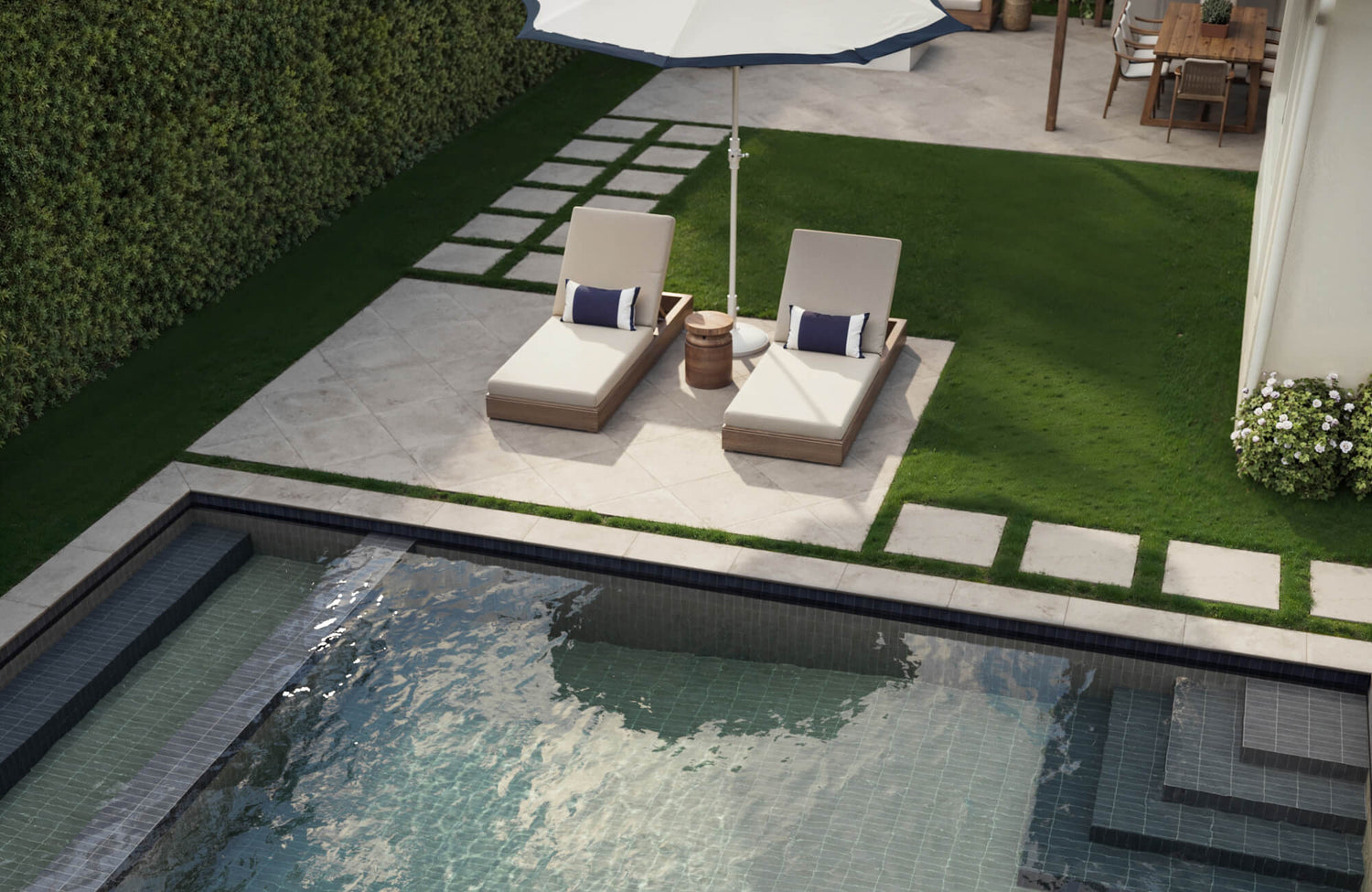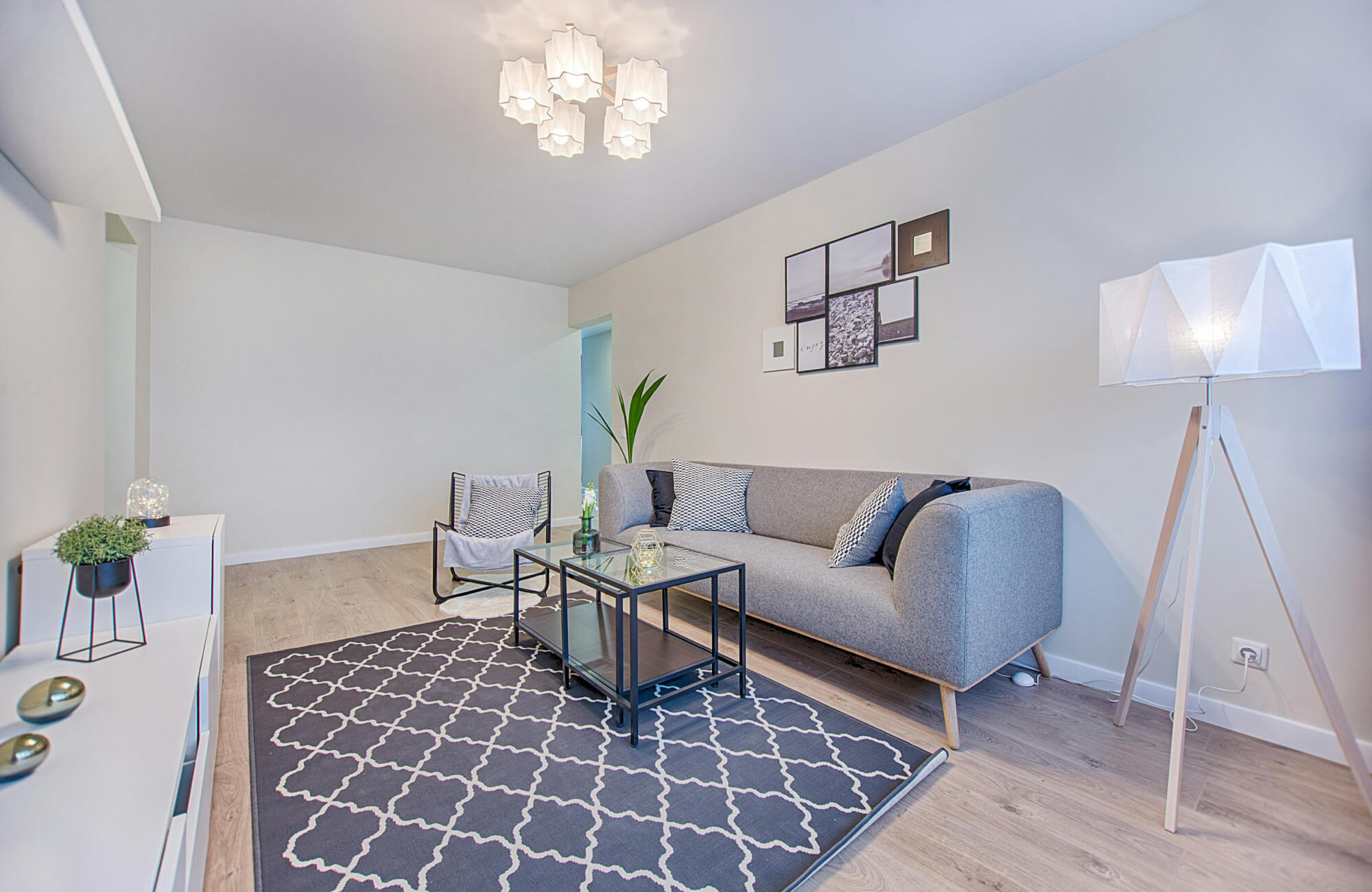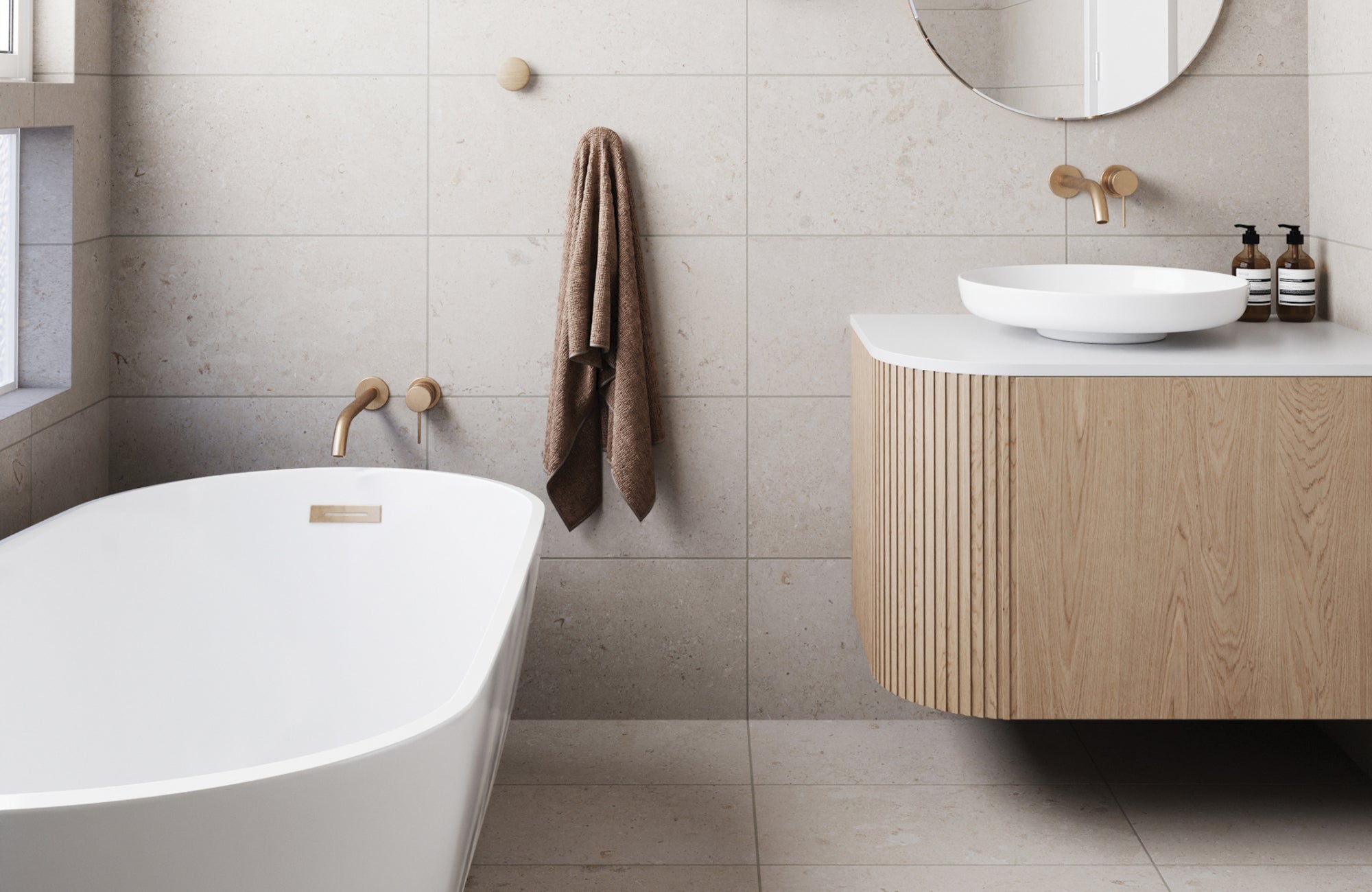A well-designed pool is more than a retreat—it’s a statement of timeless luxury, engineered performance, and architectural harmony. At the intersection of beauty and durability lies the choice of tile, a material that must endure not only the rhythm of water and sunlight but the demands of everyday use. Among the array of surface options, porcelain and ceramic tiles remain iconic for their refined aesthetics and enduring strength.
Yet beneath their elegant finishes lie critical distinctions in composition, resilience, and maintenance that directly impact long-term performance. Understanding these technical nuances transforms tile selection from a matter of style to one of strategic investment. This article unveils the defining characteristics of the most durable pool tiles, with a focused lens on the unmatched engineering and artistry of porcelain and ceramic.

Material Composition and Fabrication Process
Durability begins at the molecular level. The raw ingredients used to form each tile, and the precision with which they are processed create distinct differences in strength, moisture resistance, and suitability for pool environments.
Porcelain Tile Composition
Porcelain is composed primarily of refined kaolin clay, feldspar, and silica, which are pressed under high pressure before being fired at temperatures above 1200°C. This intense firing process creates a vitrified, non-porous body with exceptional density. As a result, porcelain tiles are classified as impervious, with water absorption rates below 0.5%, making them ideal for submerged pool environments.
In addition, their through-body composition ensures that even if the surface chips or wears over time, the color remains consistent throughout, helping to maintain a seamless and polished appearance. Combined with a fine grain and low porosity, porcelain offers enhanced resistance to staining, microbial buildup, and damage from freeze-thaw cycles. Together, these qualities make it an ideal material for both indoor and outdoor aquatic environments, where durability and long-term aesthetics are essential.
For a refined industrial look with the same technical performance, the Ramsey 24x48 Matte Porcelain Tile in Putty, as shown in the picture above, offers a clean concrete aesthetic in large-format sizing, engineered for seamless indoor-outdoor transitions. With eco-conscious manufacturing that avoids carbon dioxide emissions and proven performance across garden paths, pools, stairways, and driveways, this tile embodies the strength and style demanded by contemporary architectural surfaces.
Ceramic Tile Composition
Ceramic tiles are made from natural clays with larger particle sizes and typically fired at temperatures ranging from 1000°C to 1100°C. Unlike porcelain, ceramics are usually porous unless covered by a glaze that provides water resistance and color. While this glaze can make the surface suitable for poolside or wall applications, it is still less durable in the long run, especially if the glaze wears off.
The body of ceramic tiles is more brittle and prone to moisture absorption, leading to swelling or cracking over time. These traits limit their suitability for submerged areas, though they remain viable for decorative borders and above-water applications. Proper glazing can improve durability, but the tile’s core material still lacks the robustness of porcelain. For this reason, ceramic is most effective in controlled indoor environments, particularly as an elegant solution for walls, backsplashes, and light-use vertical surfaces where visual detail is prioritized over extreme durability.

Mechanical Strength and Environmental Stress Tolerance
Beyond material makeup, tiles must endure the physical challenges presented by their environment. From temperature extremes to structural loads, the ability to resist external stress without compromising form or function is essential.
Load-Bearing Strength
Porcelain tiles exhibit high mechanical strength, with a modulus of rupture (MOR) often exceeding 35 MPa. This enables them to withstand heavy loads and impact forces without structural failure, a necessity in commercial pools or busy public facilities. Their dense composition also reduces the risk of microfractures that can propagate under stress, extending the lifespan of the installation.
In contrast, ceramic tiles typically offer MOR values below 25 MPa, rendering them more susceptible to breakage under point loads or shifting substrates. These structural differences are critical when considering underwater use or areas with heavy foot use, where stability and durability cannot be compromised. For spaces that demand enhanced performance, reinforced porcelain tile options are available, offering greater strength and resilience.
For demanding environments, Edward Martin’s Bowden 24x24 Grip Porcelain 2cm Paver in Canvas, as displayed in the photo above, exemplifies porcelain’s engineering strength. It’s resilient under shocks, solid under significant loads, and resistant against scratches, stains, and harsh chemicals. Additionally, it withstands UV exposure without fading, holds firm in frost-prone conditions, and remains fire-safe even at temperatures reaching 300°F, making it a dependable solution for enduring elegance and structural reliability.
Resistance to Temperature Fluctuations
Environmental forces introduce yet another layer of complexity, particularly for outdoor pools. These spaces must endure significant temperature fluctuations, especially in freeze-thaw climates where water expansion within porous materials can lead to cracking and surface degradation. Porcelain, with its minimal porosity, offers a reliable solution. Its dense composition makes it highly resistant to freeze-thaw damage, allowing it to retain structural integrity throughout seasonal shifts. Additionally, its low coefficient of thermal expansion promotes dimensional stability, minimizing stress on surrounding grout lines and waterproofing systems.
In contrast, ceramic tiles are more susceptible to moisture absorption, which increases their risk of damage when exposed to freezing temperatures. Over time, even slight thermal movement can cause these tiles to delaminate from their setting bed. While proper insulation and expert installation can help reduce this risk, the material’s inherent vulnerability to climate stressors remains a consideration in outdoor applications.

Water Resistance and Chemical Durability
As pools operate under constant chemical and moisture exposure, it becomes essential to understand how different tile types perform when submerged or subjected to routine maintenance regimens.
Water Absorption Rates
As mentioned, porcelain tiles are considered impervious by ANSI A137.1 standards due to their sub-0.5% absorption rate. This quality drastically reduces the risk of water-induced damage such as efflorescence, biological growth, and material fatigue. Because of their vitrified structure, water is unable to penetrate the tile core, helping maintain both performance and appearance over time.
In contrast, ceramic tiles typically fall into the semi-vitreous to vitreous category, with absorption rates ranging from 3% to 7%. This higher porosity leaves ceramic tiles more vulnerable to moisture intrusion, particularly when grout lines are not properly sealed. While a durable glaze can offer some protection, the underlying tile body remains susceptible to gradual weakening with extended exposure. Given these differences, porcelain stands out as the more reliable choice, especially in environments where long-term water resistance is essential.
For installations where moisture exposure is constant, the Carter 24x48 Grip Porcelain 2cm Paver Tile in Ash, as shown in the photo above, offers a compelling solution. Crafted in the USA using up to 45% recycled content, this quartzite-inspired paver is twice as thick as standard porcelain and resists water infiltration across grass, gravel, sand, or raised pedestal foundations. Designed for both indoor and outdoor environments, it also delivers impervious durability with architectural elegance from garden paths to pool surrounds.
Resistance to Pool Chemicals
Chemical durability plays an equally important role in tile performance, especially in pool environments. Common maintenance agents like chlorine, bromine, and acidic cleaners can be harsh on surfaces, and not all tile types respond the same way. Porcelain tiles, with their vitrified bodies and chemically inert composition, offer strong resistance to staining, etching, and corrosion, even after prolonged exposure to these chemicals. This resilience becomes even more valuable in saltwater pools, where sodium chloride can accelerate surface degradation.
In contrast, ceramic tiles, particularly unglazed ones, tend to be more susceptible to chemical erosion. When water or cleaning agents penetrate the glaze, the underlying material can begin to break down. The long-term durability of ceramic tiles often depends on the quality and thickness of the glaze, which may diminish over time with frequent, aggressive cleaning. While regular sealing can provide a layer of protection, it introduces ongoing maintenance that porcelain tiles typically do not require.
Surface Properties and Aesthetic Longevity
Form and function must coexist harmoniously. A pool tile should enhance safety and visual appeal while maintaining its beauty in the face of sun, water, and time.
Slip Resistance and Texture
Modern porcelain tiles come in a range of slip-resistant finishes, many of which are engineered with micro-textured surfaces that comply with DCOF standards for wet environments. This design approach strikes an effective balance between traction and cleanability, helping to reduce the risk of slips and falls around areas like pool decks, patios, and entry steps. Notably, the textured surface of porcelain retains its anti-slip qualities even after extended exposure to water, sunlight, and daily wear.
In contrast, ceramic tiles often feature glossy or semi-glossy glazes that can become slick when wet. While slip-resistant ceramic options are available, they typically wear down faster and may require additional surface treatments or mats to maintain safe footing. This difference in durability gives porcelain a clear advantage, particularly in poolside or busy settings where long-term performance matters.
UV Stability and Color Retention
For outdoor settings, visual appeal must be built to last. Tiles around pools and patios are constantly exposed to sunlight, making resistance to fading and discoloration essential for maintaining a cohesive, attractive look. Porcelain tiles address this need with through-body or full-body pigmentation, meaning the color runs throughout the entire tile, not just on the surface. This construction helps preserve visual consistency even when minor chips or surface wear occur. Moreover, most porcelain tiles are UV-stable (like the Bowden tile mentioned earlier), offering strong resistance to sun bleaching over time.
In contrast, ceramic tiles that rely on surface-applied glazes are more susceptible to uneven fading, especially in areas with intense UV exposure. Over the years, this can lead to a patchy, worn appearance that disrupts the overall design.
Because of their durability and color integrity, porcelain tiles are a more reliable and aesthetically enduring option for sunlit, outdoor applications.
Visual Harmony and Design Versatility
The ability of a pool tile to integrate seamlessly into various design narratives is key to achieving a cohesive outdoor aesthetic. In this respect, porcelain tiles stand out, offering a broad range of tones, finishes, and dimensions that complement both minimalist settings and more expressive, statement-driven designs. Neutral palettes such as soft taupe, warm sand, and cool gray make it easy to coordinate with surrounding elements like decking, landscaping, and water features, contributing to a harmonious overall look.
In addition, larger format tiles help minimize grout lines, which enhances visual flow and contributes to a more expansive, uninterrupted surface. The flexibility of layout patterns, from traditional grid-set to dynamic staggered configurations, also offers another level of customization, allowing tilework to support and reinforce the intended architectural style. Whether the goal is a tranquil, spa-like retreat or a striking modern edge, porcelain provides the consistency, balance, and refined elegance needed to bring the vision to life.
While ceramic tiles may initially offer appealing design options, those with surface-applied glazes can fade unevenly when exposed to intense sunlight, particularly in high UV regions. This fading can lead to a patchy, inconsistent look that disrupts the visual unity of the pool environment. In contrast, porcelain’s inherent color integrity and superior fade resistance make it a more reliable and lasting choice for sun-exposed applications.
Visualizing surface texture, slip resistance, and color retention can be challenging when selecting pool tiles for sun-exposed or wet environments. Edward Martin’s Augmented Reality (AR) tool allows you to preview porcelain and ceramic tile finishes in real time, ensuring style, safety, and UV stability align with their outdoor pool design. Experience lifelike pool tile visualization and make confident, design-forward choices before installation begins.
Installation and Lifecycle Maintenance
Performance doesn't end at installation. The tools, techniques, and care required over time play a critical role in determining how a tile will perform throughout its lifespan.
Installation Requirements
Porcelain’s high density makes it more difficult to cut and drill, often requiring specialized tools such as wet saws equipped with diamond blades. To ensure proper adhesion, it also calls for stronger bonding agents, specifically, modified thin-set mortars that meet ANSI A118.15 standards. While these requirements can increase the initial labor effort, they ultimately contribute to a more durable, failure-resistant installation.
In contrast, ceramic tiles are generally easier to handle and more installer-friendly. However, their lower strength and higher water absorption mean they demand careful substrate preparation and the use of appropriate sealants. Without proper installation techniques or material pairing, ceramic tiles are more susceptible to early failure, especially in submerged or thermally dynamic environments.
Given these differences, investing in skilled labor and using the right adhesives is critical to the long-term success of any tile installation. For the best outcome, it’s always wise to consult a professional who understands the specific demands of each tile type and its intended application.
Cleaning and Long-Term Maintenance
Long-term satisfaction with any surface often comes down to ease of upkeep. In this regard, porcelain stands out—its ultra-low porosity naturally resists stains, mildew, and biofilm, minimizing the need for harsh cleaning methods. Most porcelain tiles maintain their appearance with just occasional rinsing and a mild detergent, and unlike some materials, they don’t require sealing. This combination of durability and low maintenance makes porcelain especially attractive for pool owners and other high-moisture environments.
By contrast, ceramic tiles typically demand a bit more attention. Grout lines may need periodic resealing, and care must be taken when choosing cleaning products to avoid damaging the glazed surface. Over time, frequent exposure to strong chemicals can dull ceramic finishes, particularly in busy or high-use areas, leading to increased upkeep or even earlier replacement.
Because of this, porcelain's lower maintenance demands contribute significantly to its appeal for those seeking longevity and ease over time. For the best results and long-lasting performance, always follow the manufacturer’s care and installation guidelines.
Defining Excellence in Pool Tile Performance and Design
In the search for the most durable pool tile, a clear distinction emerges between porcelain and ceramic—each defined by its material composition, structural integrity, and ability to withstand environmental stress. Porcelain tiles consistently stand out across all technical aspects. They are vitrified to near-impermeability, highly resilient under both thermal and mechanical pressure, chemically stable, and visually consistent even after decades of exposure. From slip resistance and UV stability to freeze-thaw durability and low maintenance requirements, porcelain offers a level of versatility and long-term performance that’s hard to match.
If you’re seeking to elevate your outdoor spaces with precision, longevity, and luxury, Edward Martin offers tailored design services that bring technical mastery and aesthetic excellence together. Whether guiding material specification, overseeing installation, or curating bespoke tile palettes, our team ensures that each project achieves both architectural intent and engineered durability. With Edward Martin, your poolscape is more than a surface; it’s a lasting expression of refined design and intelligent craftsmanship.









